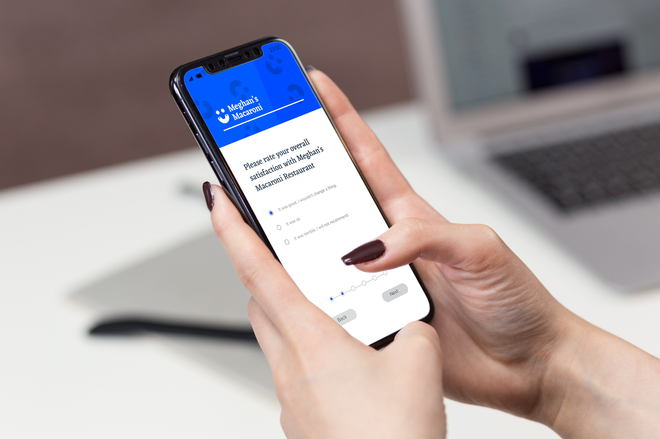
Constant engagement is key to creating a quality, meaningfully improved customer experience (CX). And for banks especially, the quality of the experiences customers have with a brand is the key factor in determining a customer’s longevity and willingness to maintain a relationship with a company. While an integrated CX approach demands that you go beyond the survey and look at data from everywhere – social reviews, call transcripts, chat logs, email threads, and more, CX surveys are the foundation. Banks can and should engage with customers via CX surveys and other feedback methods to see what customers love about the experience and what might need a little tweaking. Even more importantly, banks should engage with customers to let them know that they’re cared for not just as customers, but people.
Customers who feel heard and seen in this way will keep coming back even when the competition out there is fierce (and as you well know, it’s always fierce in the banking world). But what best practices should you follow to create winning CX surveys for bank customers?
Most banks rely on surveys to engage with their customers and gather this valuable intelligence, which is why today’s conversation focuses not ‘just’ on how to build a great survey, but how to do so in a way that speaks effectively to banking customers. So, with that in mind, let’s kick things off by going over our two favorite survey types: relationship surveys and transactional surveys.
Relationship Surveys
Relationship surveys are all about the big picture—brands in every industry use them to get a glimpse of the entire customer-company relationship instead of one or two transactions. A good relationship survey gives banks not only how their customers feel about experiences now, but also helps highlight which experience elements might be even more influential tomorrow.
What follows is the secret sauce for a great relationship survey. You want to include metrics that measure overall satisfaction and loyalty. You also need questions about brand perception, channel usage and satisfaction, product usage and satisfaction, and the experiences that impacted, or are impacting, your customers the most. Questions about marketing communication perception never hurt either! All of these questions, when used together, will give your bank a 360-degree view of customer relationships that goes a long way toward Experience Improvement (XI).
Transactional Surveys
As its name suggests, a transactional survey is all about how well (or not) a transaction at your bank went for your customer. These surveys can be tuned to both in-person interactions and online banking. Though transactional surveys are of a smaller scale than relationship ones, they’re also much more specific, which is great when you’re trying to get into the details of individual interactions.
Generally speaking, you want your transactional survey to ask how well the transaction went, overall satisfaction with elements like application processes and bank teller interactions, and whether there were any problems with either the transaction itself or the resolution that followed. All of that makes for a good enough survey, but we challenge you to go beyond by also asking about elements like how knowledgeable your customers think your reps are, how complete your information is, and whether it’s easy to jump between channels for a more fluid experience.
The Next Step
Whether you’re looking to design your first survey or double-checking whether your current one is up to scratch, we also challenge you to bear something else in mind: having a survey is great, but knowing when and where to deploy it is even better. Hot alerts, contextual survey deployments, and being able to analyze unstructured survey feedback can help take your bank straight to the top.
Interested in learning more on how to do all that? Click here to read our full-length eBook on how banks like yours can use surveys to meaningfully improve experiences, strengthen your bottom line, and build meaningful relationships with customers!





